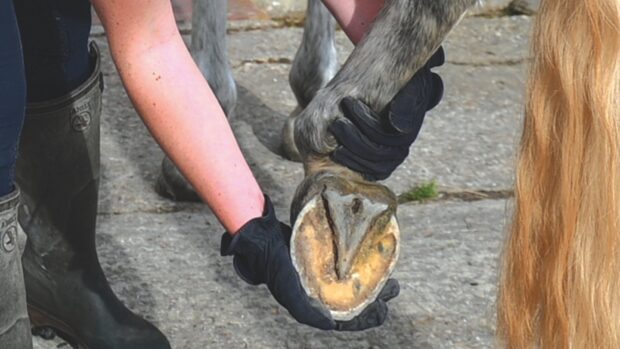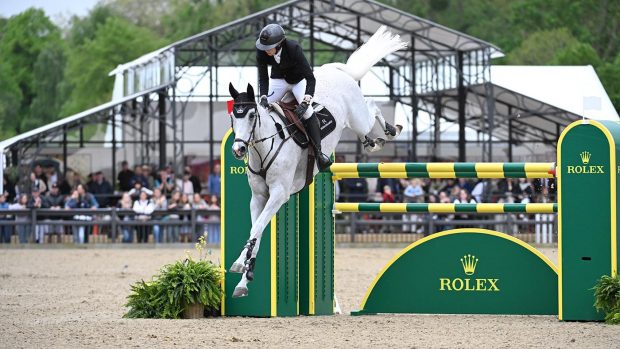Navicular disease is a condition that can be caused by the structures in the navicular area of the hoof being over-stressed — ie the navicular bone, the navicular bursa and deep digital flexor tendon.
Two types of hoof conformation pre-dispose a horse to navicular. A horse with collapsed heels and a broken back hoof pastern axis is at risk, as every time the limb bears weight and the hoof tries to breakover, the navicular area is being over-stressed.
A horse with a broken forward hoof pastern axis and a very upright boxy hoof conformation will also be prone to problems, particularly as the limb bears weight.
The Equine Digital Support System is an effective shoeing method to achieve soundness. The sole is packed with impression material and a graduated anti-concussion hoof pad placed over the whole sole of the hoof. A natural balance shoe is fitted to keep pad and cushion in place.
A graduated frog plate is then pushed into the pad and the hoof cushion, supporting the descending bodyweight through the bone column and in turn easing the pressure on the navicular area, allowing healing.
Once the horse is no longer lame, a natural balance bar shoe is an effective way of maintaining soundness. This type of shoe distributes weight over the whole hoof capsule as well as allowing easy breakover via the square toe.
Alternatively a broad web shoe can be useful whether the horse is shod with a rolled toe or a square toe. A rolled toe will allow slightly easier breakover, although not as much as a square toe. The rolled toe is set into the dorsal wall of the hoof and a square toe is set under the hoof, leaving some toe hanging over the front of the shoe as only so much hoof can be removed from the dorsal wall.
The width of the shoe can make a big difference to the horse’s comfort – the wider the shoe, the greater the weight distribution. With any form of remedial or corrective shoeing, the way the feet are trimmed and balanced is just as vital as the form of shoeing selected to correct a particular problem. Periods between shoeing should be kept short at around four to five weeks.
There are various medical products aimed at this problem, but there really is no substitute for a well put together horse with correct limbs and feet.



